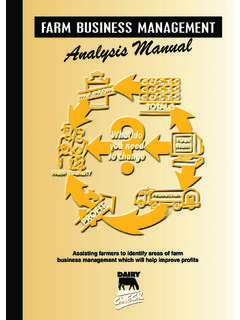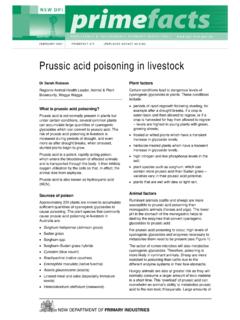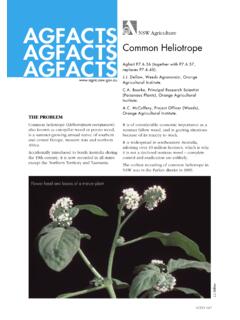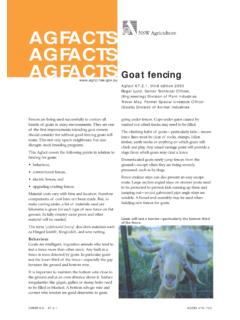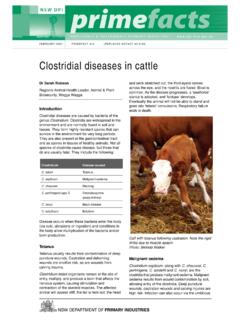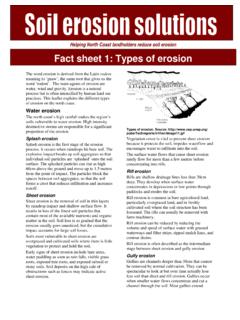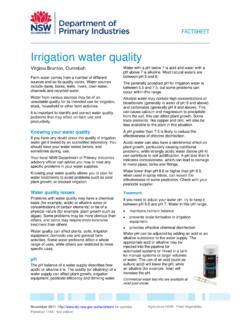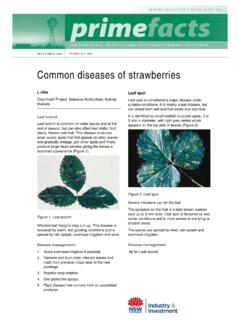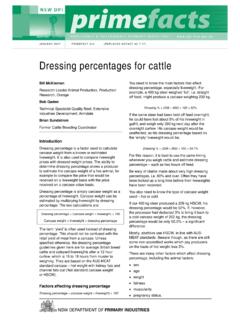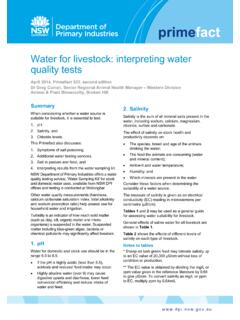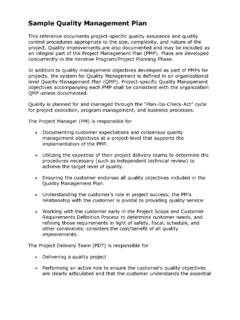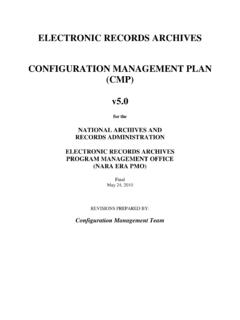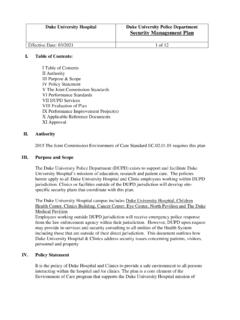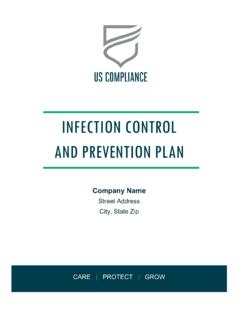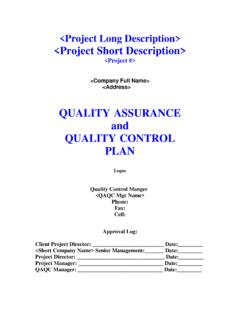Transcription of Fatigue Management Plan - Department of Primary Industries
1 A practical guide to developing and implementing a Fatigue Management plan for the NSW mining and extractives industry Fatigue Management PlanAcknowledgementsThis plan was prepared by the NSW Mine Safety Advisory Council s (MSAC) Fatigue Working Party, with assistance from consultant Dr Tim Driscoll of ELMATOM Pty Ltd. It draws on information from a variety of sources, but is based particularly on two sources: a report prepared by Andrea Shaw (Guidelines on Fatigue Management ) which, in turn, had input from Dr Sally Ferguson of the Centre for Sleep Research at the University of South Australia and which incorporated comments and suggestions from throughout the mining industry, and material based on Queensland s Guidance Note for Management of Safety and Health Risks associated with Hours of Work Arrangements at Mining Operations.
2 And a jointly authored WorkSafe Victoria and WorkCover New South Wales report ( Fatigue - prevention in the workplace). A third relevant publication, the WorkSafe Victoria publication Fatigue in Mines, which incorporates some of the first two publications, was also consulted. With permission, passages from the first two documents have been reproduced and incorporated into the text of this document without individual identification and attribution because this would have significantly interferred with the flow of the represented on the MSAC Fatigue Working Party are: the Australian Workers Union; Cement Concrete and Aggregates Australia; Consutruction, Forestry, Mining and Energy Union (Mining and Energy Division); Mine Safety Advisory Council; Industry & Investment NSW.
3 And the New South Wales Minerals Mine Safety Advisory CouncilThe NSW Mine Safety Advisory Council has the strategic objective of achieving world-leading occupational health and safety through the development of changes in health and safety culture throughout the mining industry in Council was established in 1998 following recommendations made in the 1997 Mine Safety Review and Gretley Inquiry. The Council was strengthened in 2006 through: the setting up of a secretariat within the existing structure of Industry & Investment NSW; the appointment of two independent experts in OHS; and making resources available, when appropriate through Industry & Investment NSW, on the Council s recommendation to explore issues and commission research.
4 The Council includes senior officials from some of the most respected bodies in the mining industry including the CFMEU (Mining and Energy Division), Australian Workers Union, NSW Minerals Council and Cement Concrete and Aggregates Australia. Two independent experts in occupational health and safety are also part of the Council. Mr Norman Jennings was appointed Chairman of the Council in 2006. The Council was established to provide the Minister for Mineral Resources with advice on critical OHS issues to the NSW Government. The Minister brings these matters to the Council for its consideration, requesting its advice on appropriate ways forward in the continual drive to foster improved OHS performance in the industry.
5 Research into key OHS issues in the mining industry was commissioned by the Council and released as the Digging Deeper Report in 2007. The Council hosted a CEO Summit in November 2008 which issued a communiqu outlining a joint vision for the industry and an agreement on a set of guiding principles that will help ensure the industry has a dynamic culture to address key health and safety Council is focused on addressing the areas of culture change; Fatigue ; negative impacts of safety incentive schemes and production bonuses; the disconnect between OHS systems and practice; contemporary health issues, including musculoskeletal disorders.
6 And OHS issues affecting contractors and inexperienced and implementation of a Fatigue Management plan for the NSW mining and extractives industry. December 2009, version Industry & Investment NSW for and on behalf of The State of NSW - 2009i cover Preface Obligations and NSW legislative and regulatory Duty Obligations of operators, controllers and Employees and visitors ..iv Summary What is Fatigue and why is it a problem? (Chapter 1) .. 1 Who needs a Fatigue Management plan ? (Chapter 2) .. 1 Developing and implementing a Fatigue Management plan (Chapter 2).
7 1 Policy commitment (Chapter 3) .. 1 Consultation (Chapter 4) .. 2 Role clarity (Chapter 5) .. 2 Risk Management (Chapter 6) .. 2 Documentation (Chapter 7) .. 2 Implementation (Chapter 8) .. 2 Evaluation (Chapter 9) .. 2 1. Introduction Background .. 3 Fatigue in the NSW mining and extractives 4 Purpose of this 6 2. Fatigue Management plan :development and implementation overview Introduction .. 7 7 Resources needed for an effective Fatigue Management 8 3. 10 4. Consultation Introduction .. 11 12 5. Roles and responsibilities 13 Employee/worker.
8 13 Contents ii 6. Fatigue risk Management Introduction .. 14 Hazard identification: Identifying factors that may contribute to Fatigue .. 15 Risk assessment .. 16 Risk Evaluation .. 20 7. Fatigue Management plan 24 8. Fatigue Management plan Introduction .. 25 Timeframes .. 25 Training .. 25 26 26 26 26 9. Fatigue Management plan : monitoring and evaluation Appendix 1: extract from the executive summary of the Digging Deeper Report .. 28 Appendix 2: Risk Assessment chart .. 30 Appendix 3: Tips for individuals on avoiding 34 Appendix 4: Accessing further resources and references.
9 35 iii List of tables Table 1 Fatigue risk factors .. 17 Table 2 Examples of control measures for various Fatigue risk 21 List of figures Figure 1 Fatigue Management plan : Development and implementation 9 Glossary Active work Total time spent at work including overtime. This does not include time traveling to or from the work site or rest breaks during shifts. Employee/worker Any person who works on the site, regardless of their employer. This includes contractors. Operator/employer Any person or organization responsible for the employment of one or more employees/workers on site.
10 Extended working hours Any working hours in excess of established rostered hours, including overtime. OHS Occupational health and safety. Rostered hours The hours for which an employee/worker is rostered to work. Time not working Time outside of working hours. Does not include time traveling to or from the work site. Work cycles / rosters The working period scheduled between any significant break away from work. Work schedules The hours to be worked for each day, shift, week, month or year, as scheduled by the employer. Shift The hours between the start and finish of established rostered hours.
